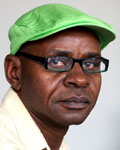
Top stories


EducationFrom adversity to opportunity: African education’s revival strategies
Sanjeev Mansotra 1 day



Marketing & MediaThe Odd Number named Financial Mail AdFocus Mid-Sized Agency of the Year
The Odd Number 2 days

More news











"This is mostly coming from the personal mp3 player, and the most significant example is Apple's iPod,” Norman Gibson, RadMark marketing manager, said.
Nevertheless, Gibson said that while iPods allow listeners to cut themselves off and immerse themselves in a private world of selected music, radio offers company, connects people to the outside world and helps them to feel in touch with reality in the present day.
“Radio is better for music discovery and iPods are better for music recovery,” Gibson emphasised.
When Apple Computers invented Podcasts in 2001, there were fears that iPods were going to subdue radio, but as time went by it became obvious that although fulfilling different needs, the two were going to develop into complementary technologies, as many listeners nowadays download radio programming onto their iPods for later listening. This ‘strange' mixture creates new opportunities for advertisers.
Tsholo Mkwanazi, RadMark business development director, told Bizcommunity.com: “Digital revolution is not a threat for radio, but on the contrary it represents a vital opportunity that helps radio to extend its footprints and expand itself to other aspects of business.”
Anice Hassim, internet strategist for IMMEDIA – a Durban-based internet company – echoed Mkwanazi's comments, saying: “We, as radio, do not see these technological advances as a threat, but rather as opportunities. When thousands of listeners log on radio websites every week, they actively engage and create touchpoints with radio stations.
“This means that unlike other traditional media, radio is capable of co-existing with technology and is perhaps the only media of the 21st century,” Hassim added.
“Radio is no longer a one-way media but has become a non-linear form of broadcasting as listeners are interacting with the station in various ways. Content is still the same but distribution is different. Take audiences along and you will have more informed audiences,” he advised.
Furthermore, Mkwanazi said that in this digital age radio has become such a powerful tool for companies hoping to make a resounding success in their events, sponsorships and promotions, and create brand affinity and take their respective products to greater heights.
“It is easy to understand why. Radio is amazingly flexible, trusted by listeners more than any other media, it is more human and much closer to its audiences,” she said.
Based in Rivonia, Johannesburg, RadMark acts as a sale representative for five radio stations, namely Kaya FM 95.9 (Joburg-based), Jacaranda 94.2 (Gauteng, Mpumalanga and North-West), East Coast (Durban's number one), Heart 104.9 (Cape Town) and iGagasi 99.5 (KZN).
RadMark is partly owned by Kagiso Media (47.5%), Lagardere Active Radio International (47.5%) and Employee Share Trust (5%).
